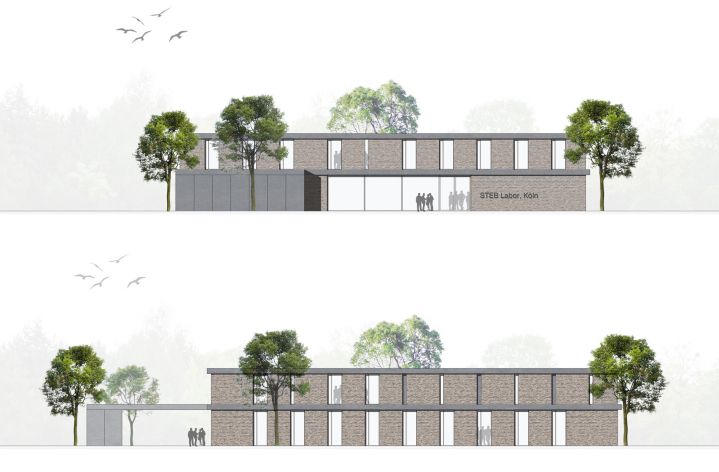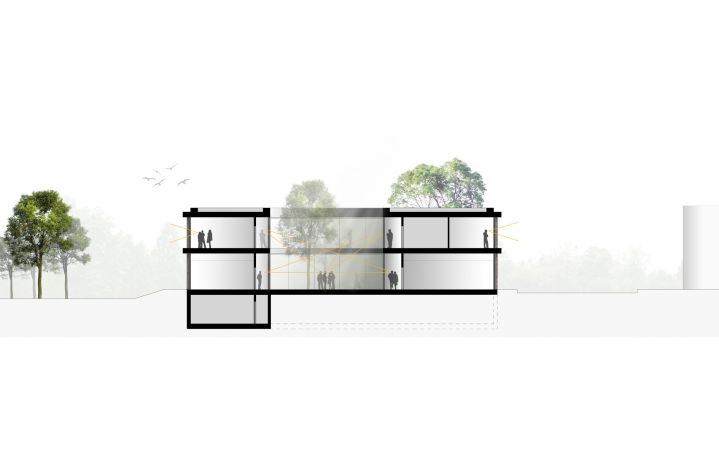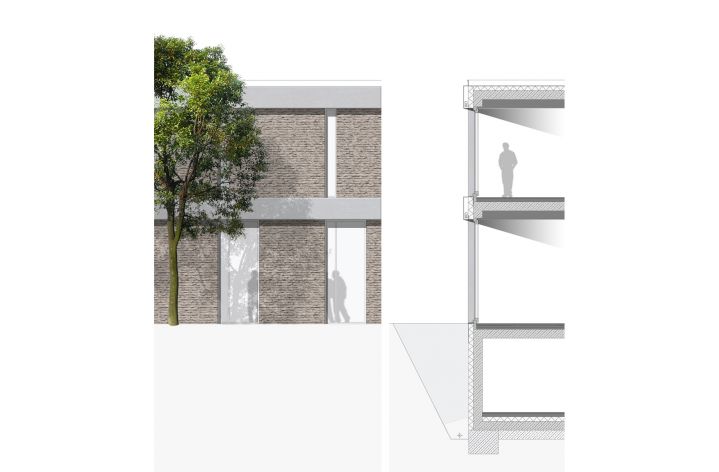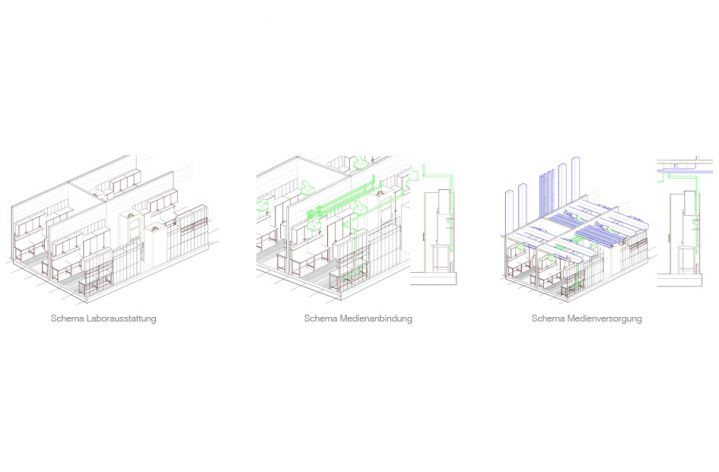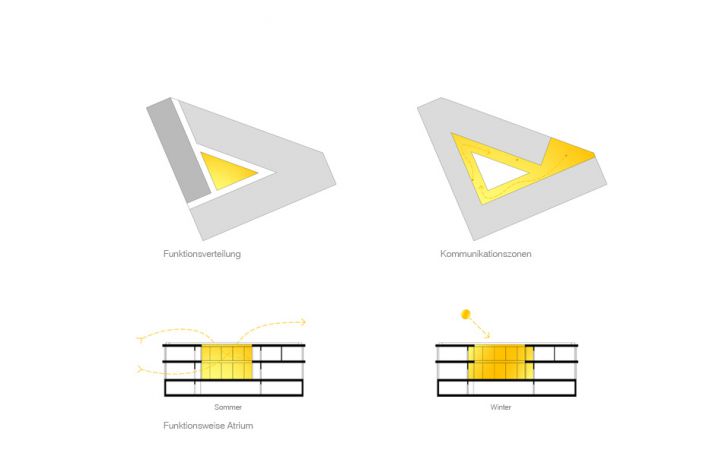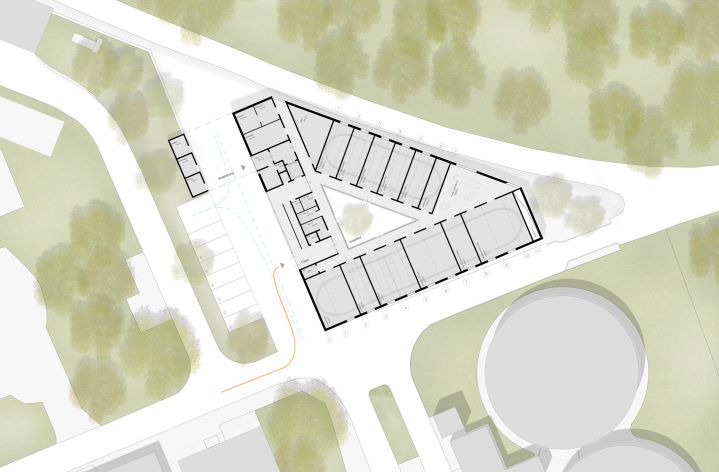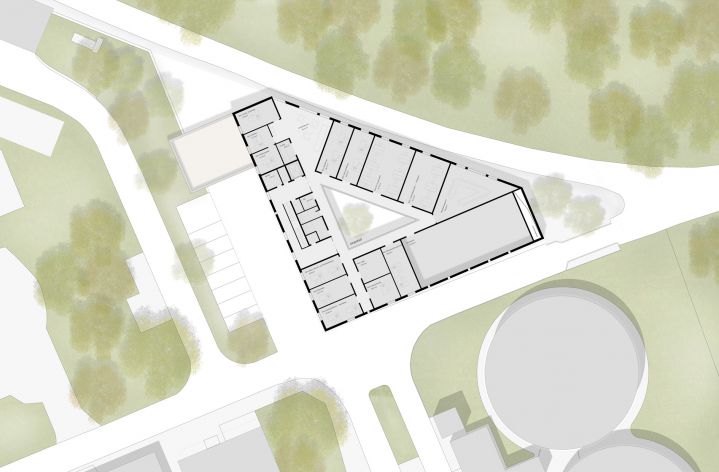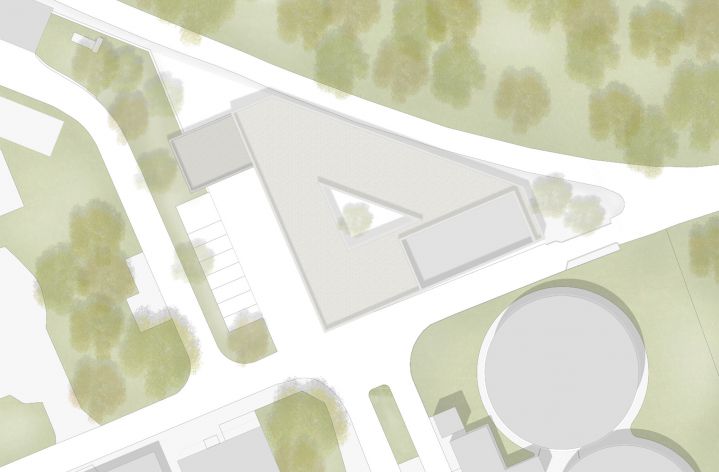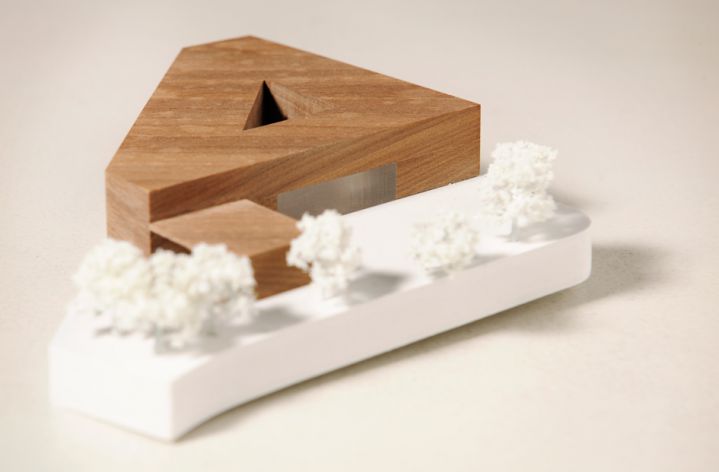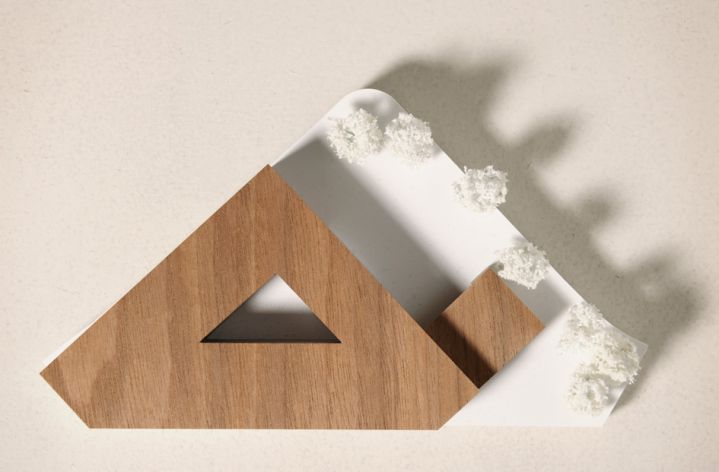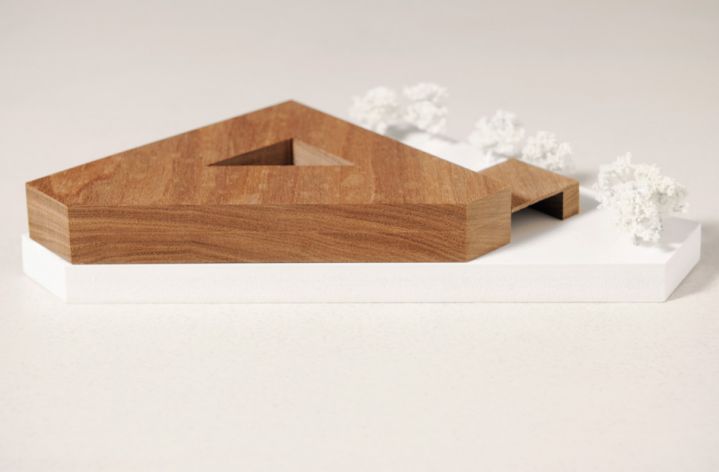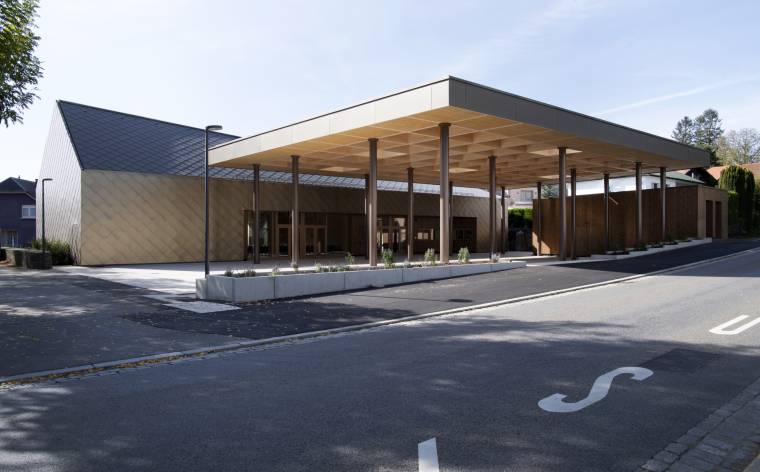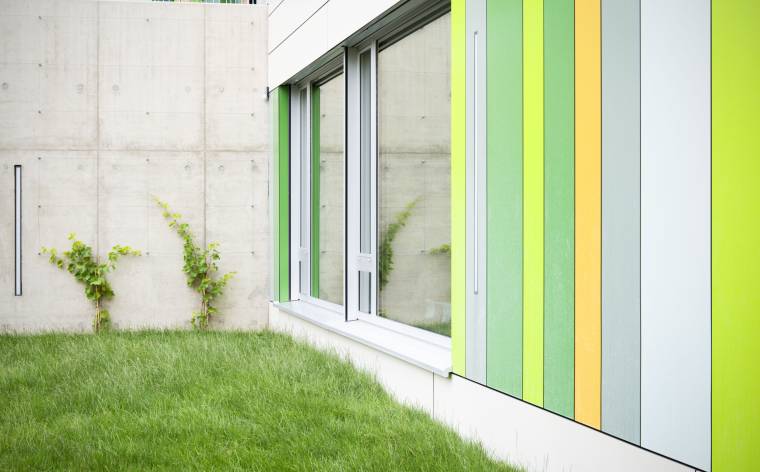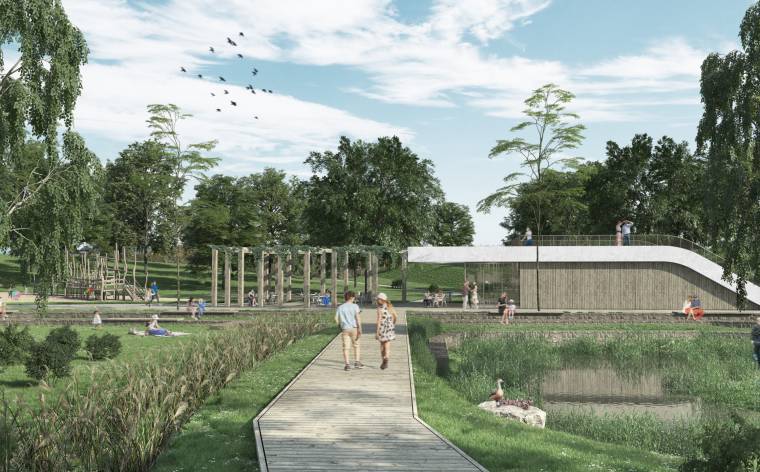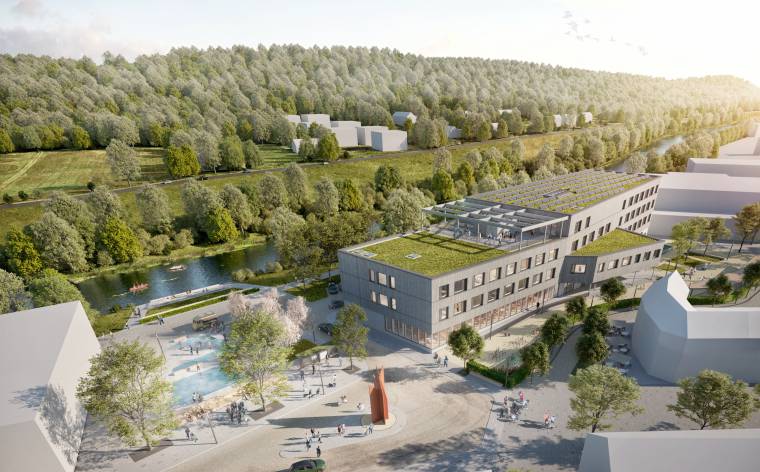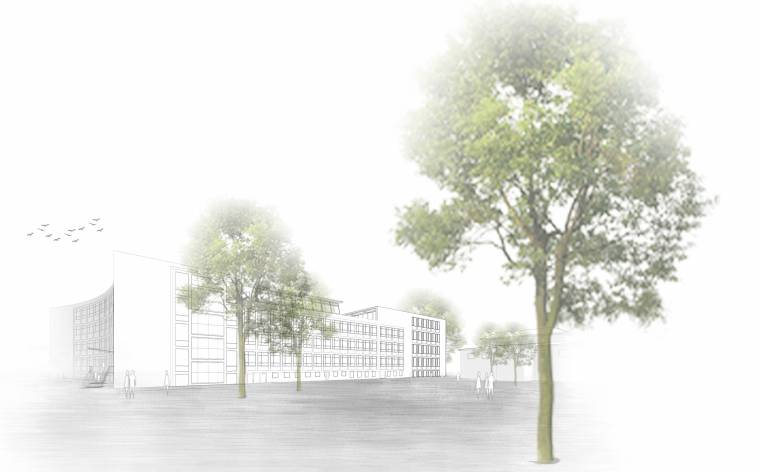Category :
Education + Research + Learning
Project :
Construction of a laboratory building for the wastewater institute of the StEB on the terrain of the sewage treatment plant Köln-Stammheim
Client :
Stadtentwässerungsbetriebe Köln AöR
Country :
Germany
Area :
gfa 2.796 m²
Planning period :
03/2013 - 06/2013
Share on
project Construction of a laboratory building for the wastewater institute of the StEB on the terrain of the sewage treatment plant Köln-Stammheim awarding authority Stadtentwässerungsbetriebe Köln AöR (StEB) planning team WW+, Esch-sur-Alzette/Trier (LUX/GER), FACT, Böblingen (GER), Felgen Ingenieurgesellschaft, Wasserliesch (GER) rendering Stube 13, Zurich (CH) gfa 2.796 m² gv 19.993 m³ net construction costs 2.997.972 € competition phase 03/2013 - 06/2013 restricted competition participation
Functional solution
The architectural concept provides a compact building cubature, adapted to the property, with an open courtyard and especially turns the attention to the harmoniously integration into the surrounding area of the sewage treatment plant. A throughout modular raster has been chosen to achieve a flexible utilisation quality and to grant the continuity of the architectural basic statement of the building. The storeys based on this can be reached via an open staircase, located in the central reception area of the building, thus guaranteeing short ways inside the building. Apart from the reception area there are laboratory rooms on the ground floor whereas on the upper floor there are amply designed offices and meeting rooms. The circulation areas are revaluated to open communication zones by systematic widening. The centre of the building is formed by an open atrium, being a central meeting point in the every-day business through its inviting character. All rooms, also the corridors, get a view to nature through the generous glazing and are provided with daylight, thus creating a light and friendly working atmosphere. A best possible, natural illumination reduces the energy consumption of the new laboratory building.
Construction and material
The facades show a modular raster, which is intended to natural ventilation by a change of attached exposed masonry and generous opening casements. According to the integrated energy concept of the new laboratory building robust, long-lasting and sustainable materials are consciously chosen, which are easy to clean and will remain good-looking over a long period of time.
The brick, particularly suitable because of its natural colour and surface and its weather-resistant consistence, fits harmonically into the surroundings and refers to the existing brick architecture. The processing is carried out in modern form language, following the demands of the modular flexibility of the overall structure.
Communication
High transparency leads spatially and visually to a complexity of different room zones. Places of communication are created. The internal communication as well as the interaction between the building and the area of the sewage treatment plant is positively influenced. By their transparency the inner courtyard and the entrance area offer a visual connection between the various functional areas, thus making the spatial connections readable. The draft shows a clear structure and orientation to its users. The communication architecture plays an important role from the beginning and is understood as an investment into the future and as social sustainability. The laboratory planning architecturally enables hierarchies, flexible teams, project work, focus on results and own responsibility. The spatial consequences of this permanent interdependency between individual and team performance are connected to the idea of integration, networking and decentralisation. That’s the reason why the structure of the floor plan is composed in a way to allow for silent individual work as also for free interaction. The typology of the floor plan and the straight-lined equipment but also the design of the façade do not only create working areas but also rooms for free and open interchange of ideas.
Sustainability
The new building is planned on the basis of future-oriented energy, operation and environment concepts. An extremely efficient controlled ventilation, a consequent room organisation, a high compactness of the buildings and an optimised thermal insulation are the prerequisite for this. A high level of energy efficiency is guaranteed by the planned solar power system on the roof. Moreover the roof areas of the new buildings will be extensively greened. This measure has a positive influence on the micro climate, keeps the rainwater on the roof and protects the upper floor from overheating. Hedges and small trees additionally zone the outside facilities. An important concern of the overall concept is to largely maintain the tree population as valuable quality of location and – where tree cuttings are necessary – to replace and update
Contact us !
